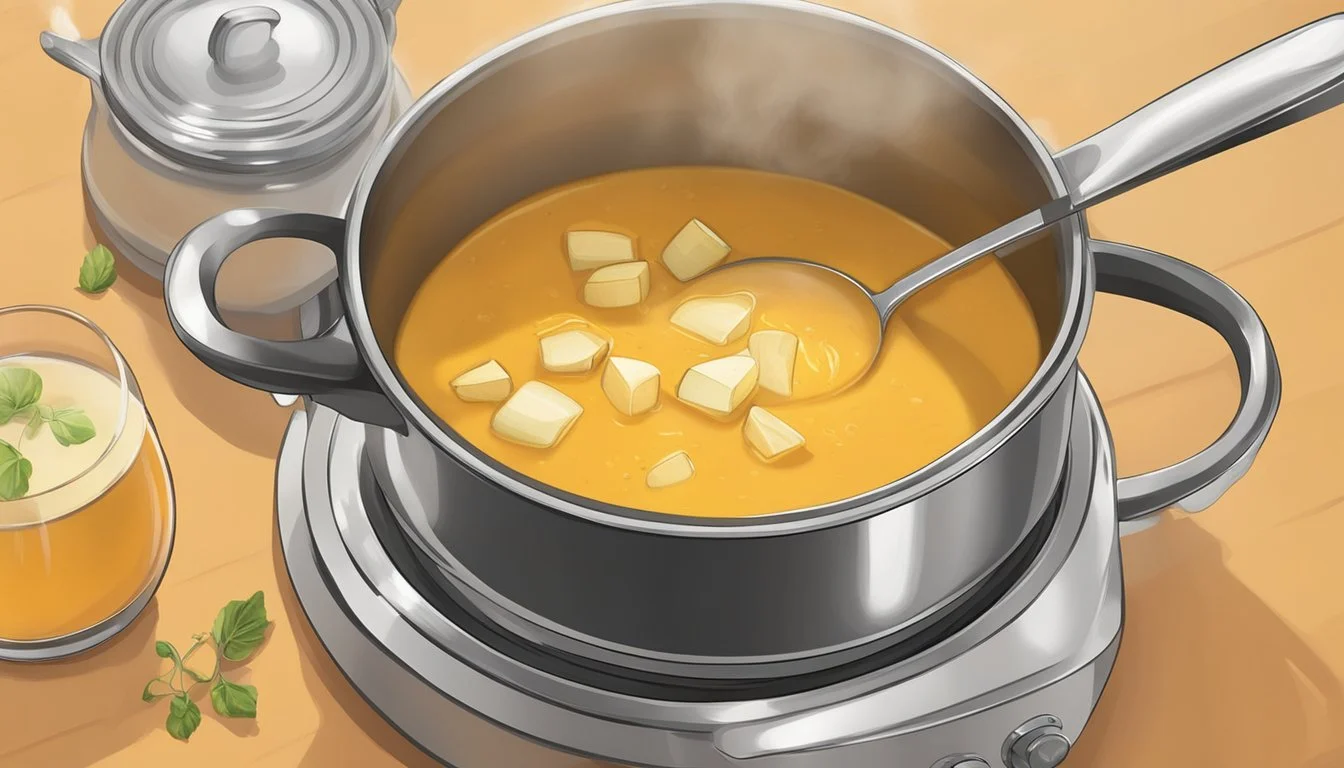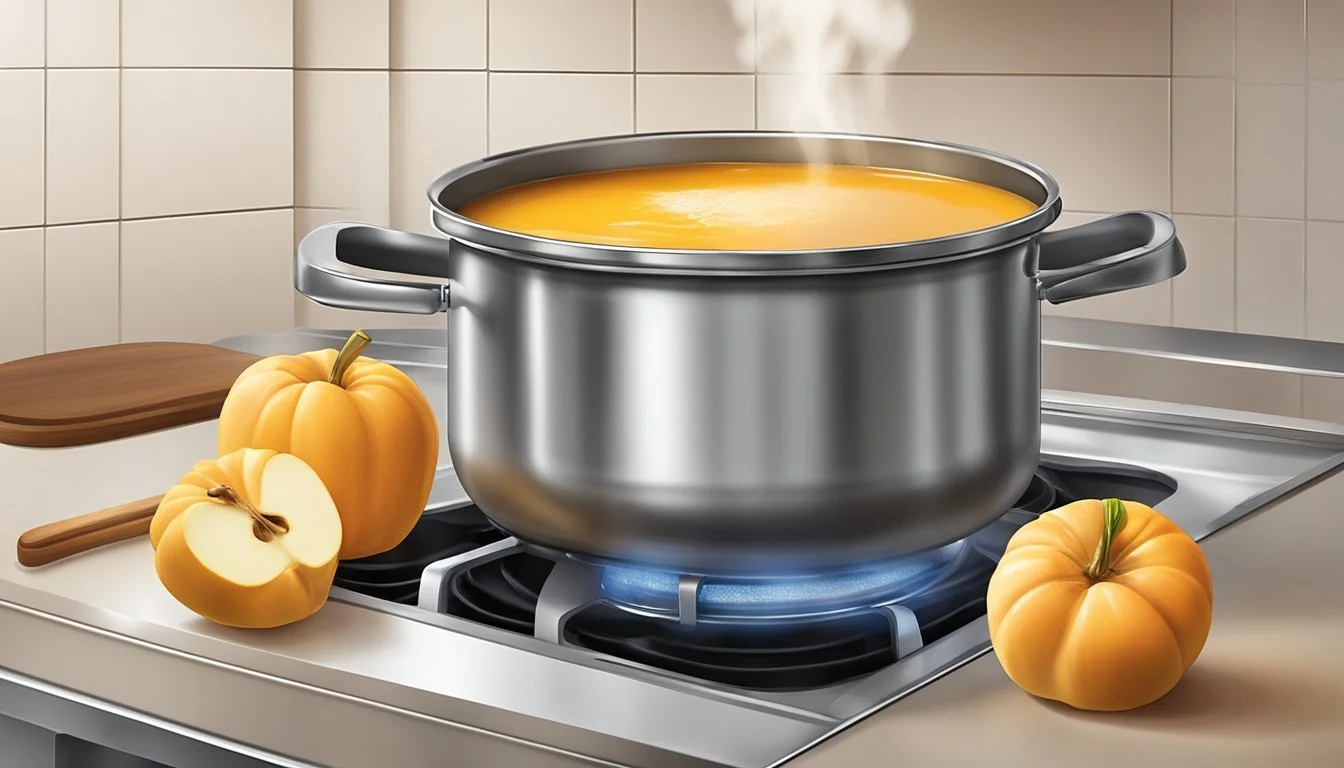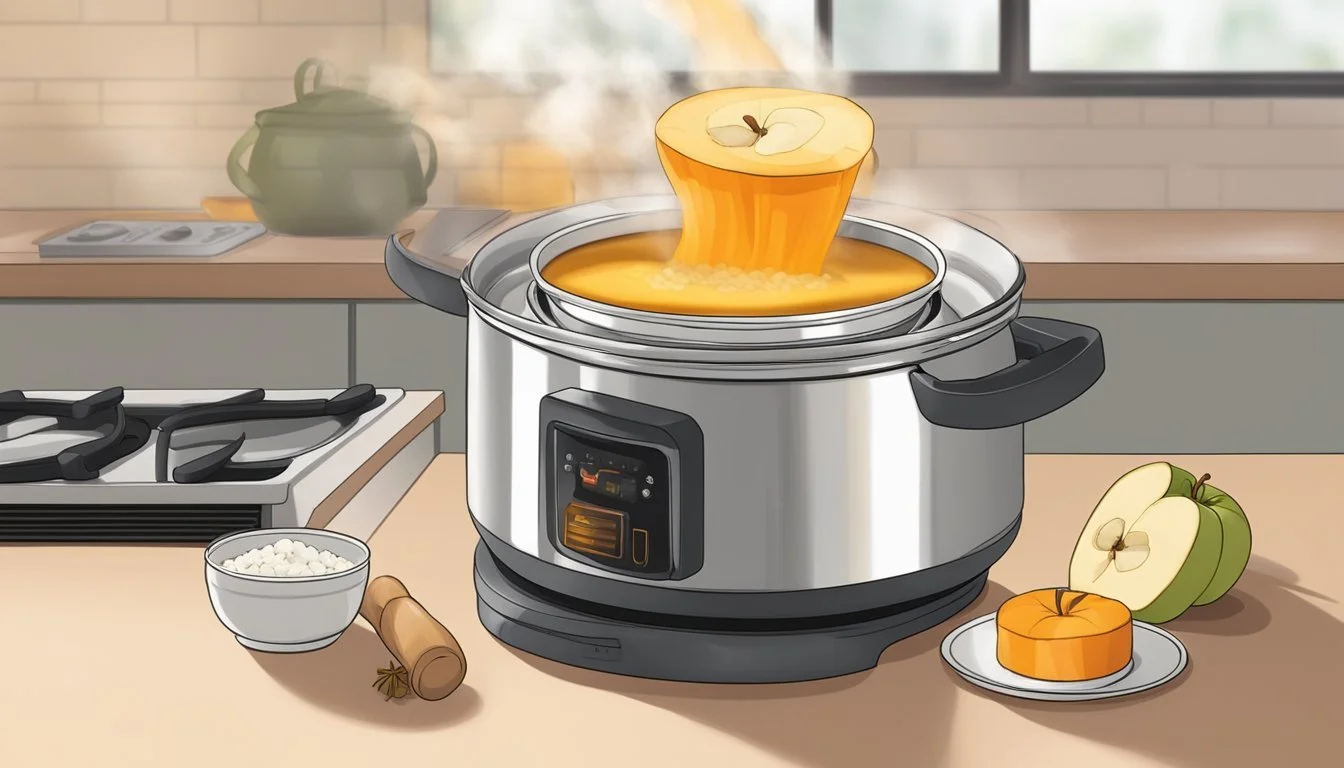Best Way to Reheat Butternut Squash and Apple Soup
Ensuring Smooth Texture and Optimal Taste
Reheating butternut squash and apple soup requires a careful approach to preserve its smooth texture and rich flavors. Soup, by its nature, can be a delicate dish to reheat; too much heat applied too quickly, and it risks separating or becoming unevenly warm. For enthusiasts seeking the best method to rejuvenate their soup without compromising its quality, the stovetop approach is often the most effective. Gently warming the soup over medium heat in a saucepan, stirring occasionally, allows for even heat distribution that can help maintain the creamy consistency of butternut squash and apple soup.
The oven method serves as an alternative, particularly useful for when larger quantities need reheating. Preheating the oven, covering the soup with a lid or foil to prevent it from drying out, and setting the appropriate temperature and timing ensure the soup slowly returns to a palatable warmth. The key throughout the reheating process, whether using the stovetop or oven, is patience; a gradual increase in temperature allows the flavors to meld harmoniously, and it gives the soup time to reach the desired temperature without any negative impact on its texture or taste.
Understanding Butternut Squash Soup
This rich and naturally creamy soup combines the sweetness of butternut squash with the tartness of apples to create a balanced and hearty dish perfect for the fall season. Both elements contribute to the soup's popularity, making it a favorite for its taste as well as its health benefits.
Characteristics of Butternut Squash and Apple Soup
Butternut squash and apple soup is distinguished by its smooth texture and a harmonious blend of flavors that are both sweet and slightly tangy. The butternut squash provides a creamy base without the need for heavy dairy products, making the soup accommodating to those following a vegan or gluten-free diet. The apples, typically a firmer variety such as Granny Smith, add a complementary note, balancing the sweetness of the squash with a subtle acidity.
When prepared, the soup has a velvety consistency that's achieved by blending the cooked ingredients until smooth. The color is usually a warm, inviting orange, reminiscent of autumn leaves, signifying its place as a quintessential fall dish.
Key Characteristics:
Sweet and Tangy Flavors
Warm Orange Color
Fall Season Favorite
Vegan and Gluten-Free
Health Benefits of Butternut Squash Soup
Butternut squash soup is not only delicious but also packs a multitude of health benefits. Butternut squash itself is low in calories but high in important vitamins and minerals, including vitamin A, vitamin C, magnesium, and potassium.
The soup is often rich in fiber, particularly when apples are included in the recipe, which can aid digestion and promote satiety. It's a hearty option that can be part of a balanced diet, supporting overall health and well-being.
Health Benefits:
Low in Calories
Rich in Vitamins A and C
Contains Magnesium and Potassium
High in Fiber (when apples are included)
Preparation Before Reheating
Ensuring that butternut squash and apple soup maintains its smooth texture and rich flavor starts well before the reheating process. Proper cooling, storing, and freezing techniques are the foundation for delicious reheated soup.
Cooling and Storing
Once the butternut squash and apple soup has been cooked, it should be allowed to cool to room temperature before being placed in the refrigerator. To expedite cooling and prevent bacterial growth, one can spread the soup in a thin layer in a shallow dish. For storing soup in the refrigerator, the use of an airtight container is crucial. It helps maintain freshness and prevents the soup from absorbing odors. Soup should be stored in the refrigerator if it is to be reheated within a few days.
Cool down: Allow soup to reach room temperature.
Airtight storage: Transfer to an airtight container.
Refrigerator: Place in the refrigerator for short-term storage.
Freezing Tips for Longevity
Freezing butternut squash and apple soup is a practical option for extending its shelf life while keeping its flavor profile intact. To freeze, one should portion the cooled soup into airtight containers or freezer bags, leaving some space at the top for expansion. Clearly label each container or bag with the date of freezing. Frozen soup can be kept for several months in the freezer.
Portion and freeze: Use airtight containers or freezer bags.
Space for expansion: Leave adequate space at the top.
Labeling: Mark with the freezing date.
Freezer storage: The soup may be stored in the freezer for extended longevity.
By following these specific steps for cooling, storing, and freezing, one can preserve the integrity of the soup's flavor and texture, making it ready for a future meal that tastes as good as when it was first prepared.
Reheating Methods
Proper reheating techniques ensure that Butternut Squash and Apple Soup's texture and flavors are preserved without causing spoilage. Here are the most effective methods.
Stovetop Reheating
To reheat soup on the stove, one should pour it into a saucepan and warm it over medium heat. They must stir occasionally to prevent sticking and ensure even heating. It's important to not let the soup boil, as this can ruin its smooth texture.
Microwave Reheating
Using the microwave involves transferring the soup into a microwave-safe bowl. It should be covered with a microwave-safe lid, leaving a small vent, and heated at medium power. Stirring after every 2-minute interval prevents hot spots and ensures that the soup heats evenly.
Oven Reheating
When reheating in an oven, the soup should be placed in an oven-safe dish and covered with a lid or aluminum foil. One should preheat the oven to 350°F (175°C) and heat the soup for about 15-20 minutes, or until it is thoroughly warm.
Utilizing a Slow Cooker or Dutch Oven
For a gentle reheat, the soup can be placed in a slow cooker or Dutch oven. The temperature should be set to low and allowed to warm for an hour or two, monitoring occasionally. This method is ideal for preventing the soup from scorching and preserving its flavors.
Maintaining Texture and Flavor
When reheating butternut squash and apple soup, the chef's objective is to preserve the soup's smooth consistency and rich flavor that was carefully developed during the initial cooking.
Preventing a Gritty Texture
To avoid a gritty texture, one should reheat the soup gradually on a stovetop. They start by transferring the soup into a saucepan over medium heat, stirring occasionally. This method allows the temperature to increase evenly, which is crucial to maintain the smoothness of the pureed soup. It's also recommended to avoid boiling, as high heat can break down the soup’s emulsion.
Enhancing Flavor During Reheating
While the soup heats, adding a small amount of butter or olive oil can reintroduce richness to the dish, giving depth to the inherent flavors of butternut squash and apple. If the soup has thickened in storage, a chef might thin it with a touch of stock or water. To enrich the flavor further, one could finish the soup with a dollop of sour cream or coconut milk, offering a creamy texture and a subtle complexity to the palate.
Additional Ingredients and Garnishes
To elevate the butternut squash and apple soup, careful selection of fresh ingredients and garnishes can enhance both the flavor and presentation. These additions should complement the soup's smooth and rich flavors without overpowering the core ingredients.
Incorporating Fresh Ingredients
Fresh ingredients stirred into the soup can introduce new textures and flavors. Croutons add a satisfying crunch and can be seasoned with herbs to match the soup's profile. Bacon brings a savory and smoky accent, ideal for balancing the sweetness of the apple. For those desiring a healthier option, Greek yogurt swirled into the soup just before serving can introduce a creamy tanginess and boost the protein content.
Suitable Toppings and Pairings
Toppings serve both a functional and aesthetic purpose. They're not just about looks; they can completely transform the soup experience. Here's a brief guide on how to select the best toppings:
Pumpkin Seeds: Their nutty flavor pairs well with squash, and they offer a delightful crunch.
Pepper: A sprinkle of black pepper adds a mild heat that complements the natural sweetness of the soup.
Garnish Options:
Parsley: A classic choice that provides a fresh, herbaceous note.
Thyme: Pairs well with apple, enhancing the soup's earthy tones.
Topping Description Pairing Suggestion Pumpkin Seeds Nutty and crunchy Sprinkle on top just before serving Croutons Herb-seasoned crunch Add to individual bowls at the table Bacon Savory and smoky Crumble over the soup to serve Greek Yogurt Creamy and tangy Swirl into the soup for richness Black Pepper Spicy and aromatic Freshly ground, to taste
These toppings and pairings promise to enrich the butternut squash and apple soup without compromising its velvety consistency and harmonious blend of seasonal flavors.
Recipe Tips and Variations
When reheating and serving butternut squash apple soup, one can maintain the richness of its flavor and smoothness of its texture by considering a few specific tips and introducing delectable variations to suit different dietary needs or to add a twist to the traditional recipe.
Adapting the Recipe for Dietary Restrictions
For individuals adhering to vegetarian diets, replacing the commonly used chicken broth with veggie broth ensures that the soup remains within their dietary boundaries while preserving its savory essence.
Vegan: Use plant-based butter or olive oil for sautéing and substitute dairy cream with coconut or almond cream.
Gluten-Free: Pair with gluten-free crusty bread or serve the soup as a standalone dish, ensuring all added spices and stocks are gluten-free.
Creative Soup Variations
Adding unique ingredients or changing the side dish can transform the experience of enjoying butternut squash apple soup.
Curry Powder: Introduce a teaspoon of curry powder for a warm and aromatic flavor.
Add-Ins: Mix in roasted pecans or pumpkin seeds for a delightful crunch.
Side Dish: Serve with a grilled cheese sandwich or a slice of crusty bread to complement the soup’s texture and taste.
Proper Use of Kitchen Equipment
Reheating butternut squash and apple soup requires careful use of kitchen equipment to preserve its smoothness and flavor. Selecting the right tools for each step ensures the soup's quality after reheating.
Blenders and Food Processors
Blenders and food processors serve a crucial role in achieving a smooth consistency for butternut squash and apple soup. An immersion blender is ideal for pureeing the soup directly in the pot, minimizing transfer and cleanup. If one isn't available, a traditional blender or food processor can be used, but care must be taken to blend in batches and avoid overfilling to prevent spills and ensure uniform texture.
Pots and Pans
A heavy-bottomed saucepan is best suited for reheating soup evenly. It's recommended to warm the soup over medium heat, stirring occasionally to prevent scorching and to ensure even heating throughout. The saucepan should have a lid to keep in the moisture and help retain the soup's natural flavors.
Skillets and Baking Sheets
Although not typically used for soup, a skillet may be necessary when reheating solid components of the soup—such as the butternut squash—if they were stored separately. Over medium heat, a small amount of oil or butter in the skillet can revive the squash's texture and flavor. A baking sheet lined with parchment paper or aluminum foil can also be used for reheating chunks of squash in the oven, which should be preheated to around 350°F (175°C), especially when dealing with larger quantities that may not fit in a skillet.
Serving Suggestions
When serving reheated butternut squash and apple soup, one should aim for a delightful balance of flavors and textures that complement the soup's creamy consistency and sweet-savory profile. Seasoning the soup appropriately is also key; consider a pinch of salt or a light dash of pepper to elevate the natural flavors of the butternut squash and apple.
Complementary Breads
Crusty Bread: A slice of crusty bread makes a rustic, satisfying accompaniment.
Toast Points: For a lighter option, serve with toast points.
Scones: For a heartier side, one might opt for scones. The buttery, flaky texture provides a pleasing contrast to the smooth soup.
Utilizing Leftovers
Croutons: Leftover bread can be turned into croutons, adding a delightful crunch.
Panzanella: Stale bread can be revitalized as a part of a panzanella salad, should one wish for a more substantial side.
Remember to serve the soup hot to ensure a truly comforting experience. It is also advisable to garnish the reheated soup with a sprig of fresh herbs right before serving to introduce a pop of color and a hint of freshness. Whether one enjoys the soup with bread or opts for a standalone serving, proper reheating techniques ensure the soup retains its smooth texture and robust flavor profile.
Best Practices for Storage and Food Safety
Proper storage and adherence to food safety guidelines ensure that butternut squash and apple soup maintains its quality and taste. Utilizing appropriate containers and understanding the soup's shelf life are crucial in preventing foodborne illness.
Airtight Containers and Freezer Bags
For optimal freshness, butternut squash and apple soup should be stored in airtight containers or freezer bags. This prevents the entry of air, which can cause freezer burn and spoilage. Containers should be:
BPA-free
Leak-proof
Suitable for both refrigeration and freezing
If using freezer bags, one should:
Squeeze out excess air before sealing
Lay flat in the freezer for space-efficient storage
Shelf Life and Defrosting
The shelf life of butternut squash and apple soup in the refrigerator is typically 3-4 days. If frozen, it should maintain its quality for 2-3 months. To ensure food safety, it's important to label containers with the date of storage.
For defrosting, the safest method is in the refrigerator, as it allows for a slow and even thaw. It usually takes:
24 hours for every 4-5 cups of soup
After defrosting, the soup should be reheated to an internal temperature of 165°F to eliminate any potential bacteria. It should be consumed within 24 hours and should not be refrozen.
Dealing with Common Issues
When reheating butternut squash and apple soup, two common issues are the soup becoming too thick and a loss of its original rich flavor. This section provides solutions to address these specific problems, aiming to preserve the soup's smooth texture and robust taste.
Soup Becoming Too Thick
As butternut squash and apple soup cools, the starches continue to absorb liquid, often resulting in a thicker consistency upon reheating.
Solutions:
Add Liquid: Gradually stir in small amounts of broth or water until the desired consistency is reached.
Reheat Slowly: Gently heat the soup on a low setting, frequently stirring to help maintain an even texture.
Soup Losing Flavor
Flavor loss can occur if the soup is stored for an extended period or reheated improperly.
Solutions:
Season as Needed: Taste the soup after reheating and adjust the seasoning with salt, pepper, or herbs.
Low Heat: Reheat the soup over low heat to avoid overcooking, which can dull the flavors.
Conclusion
Reheating butternut squash and apple soup properly is essential to preserve its smooth texture and rich flavor. One must follow specific guidelines to ensure the reheating process retains the soup’s quality.
Best Practices:
Gentle Heat: To prevent the soup from burning or becoming unevenly heated, one should use medium heat and stir occasionally.
Storage to Stovetop: Transferring the soup from its storage container to a saucepan is typically the best method.
Thorough Heating: It is crucial to heat the soup until it is just the right temperature throughout, avoiding overcooking.
Key Takeaways:
For those favoring an oven method for solid pieces, preheating to 350°F (175°C) and preparing a baking sheet with parchment or foil can lead to evenly heated squash.
Using aluminum foil or a lid when reheating in the oven can help capture moisture, preventing the squash from drying out.
In summary, one must prioritize even and gradual heating, whether it's in a saucepan on the stove or as a reheated leftover dish in the oven. By adhering to these practices, the individual ensures the essence of the butternut squash and apple soup is preserved—smooth, flavorful, and comforting.










